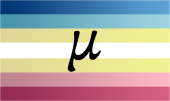Girllove: Difference between revisions
Citizen 2416 (talk | contribs) No edit summary |
The Admins (talk | contribs) |
||
| (31 intermediate revisions by 4 users not shown) | |||
| Line 1: | Line 1: | ||
__NOTOC__{{MAI}}'''Girllove''' is a strong romantic and erotic attraction to [[girl]]s, and someone experiencing it may be identified as a girllover. "Girllover" is considered analogous to "[[boylove]]r" in that both label individuals primarily attracted to children or teenagers. Often, individuals wishing to refer to both boylovers and girllovers collectively (or to an individual who is attracted to both boys and girls) will use the ambiguous terms [[Minor Attracted Person]], [[Youthlove]]r, or [[Childlove]]r. | |||
==As a social identity and movement== | |||
The idea of girllove as an identity, goes back at least three decades - as seen in the title of [[Lawrence A. Stanley]]'s quarterly newsletter, ''[[Uncommon Desires]]'': “the voice of a politically conscious girl-love underground” in the late 80s.<ref>[https://www.brongersma.info/images/UD_03.pdf Uncommon Desires 2 - 1989]</ref> It had even been mentioned ironically by Samuel McCracken in a 1979 Military Chaplain's Review - juxtaposing its implausibility against the very real [[boylove]] activism surrounding the [[Boston-Boise affair|Boston Sex Scandal]]. It is likely, however, that the less stylized "heterosexual pedophile" (sometimes shortened to "heteroped") predominated before then. Such was used by [[Paedophile Information Exchange|PIE]]'s [[David Joy]] in reference to the contemporary discourse among British Pedophiles, and [[Frits Bernard]], both in the 80s.<ref>[https://spotlightonabuse.wordpress.com/2013/07/02/secrets-of-the-pie-men-21-8-82/ Secrets of the PIE Men - Press Cutting from 1982]</ref><ref>[http://www.ipce.info/ipceweb/Library/dutch_movement_text.htm Dr. Frits Bernard] (Autumn 1987). "The Dutch Paedophile Emancipation Movement". Paidika: The Journal of Paedophilia. 1 (2): 35–45.</ref> [[Thomas O'Carroll]] also confirms that girllovers were rare and marginalized in the first wave and sometimes referred to as "hets" or "hetpeds" (see gallery). | |||
In the 1990s, '''Alt.support.girl-lovers''' aka '''ASG-L''' or '''ASGL-L''' was a popular online GL newsgroup, and mailing list by the same name. | |||
Before the emergence of girl love as a distinct identity (in reaction to the [[Moral_panic|increasing stigma of pedophilia]]), possibly girl love would not be treated as different from conventional heterosexuality as long as it did not otherwise violate social norms (such as a taboo on sexual relations outside of [[Youth-Adult_Marriage|marriage]]). | |||
==Comparisons with boylove== | |||
Some people (such as the late [[David Riegel]]) believe that beyond the coincidence of having a child as the object of one's attraction, boylove and girl love are qualitatively different. Boylover proponents of this view point to the ability of an adult male to serve as a mentor and role model to a boy, in a sense teaching him "how to be a man," which they claim has no analogue in a girllove relationship. Also, the potential of impregnating a girl adds a dynamic to a sexual relationship which is not present for adult male boylovers. | |||
Girllover detractors may respond that an adult male is equally able to serve as a mentor and role model to a girl and point to the fact that many childlovers find penetrative sex with children objectionable (some even find all sex objectionable), while girl lover proponents might add that girl love, excepting the age difference or specific age preference (hebe or pedophilic) is not essentially different from normal male heterosexuality, thus constituting a subset of it (some, pointing to [[Research:_Prevalence|prevalence]] and tendency to associate youthful and neotenic traits with feminine attractiveness may go as far as to claim it is an inherent part of it). | |||
Traditionally, the prospect of [[Youth-Adult_Marriage|marriage]] which may tie into already aforementioned point about pregnancy is another aspect in which a heterosexual girl love relationship differs from boylove. | |||
Others, however, point to the identical societal rejection of both attractions and the similar treatment of boylovers and girllovers in the mass media, the legislature and the popular consciousness as an indication that there is more in common between the two groups than there is different. There is a general agreement among many of the more important resources (such as [[Free Spirits]] and [[GirlChat]]) that when it comes to certain issues there is nothing to lose by working together. Thus there has always been some technical cooperation between administrations of various resources on all sides. An excellent example of this cooperation is [[LifeLine]], a crisis-intervention resource that serves both communities. | |||
An example of such cooperation can be cited from the early days of Free Spirits. A well-known GL activist and attorney provided Free Spirits with legal advice and assistance as Free Spirits was being formed and organized. Free Spirits provided him with technical advice with respect to his hosting some of his resources on the Internet. | An example of such cooperation can be cited from the early days of Free Spirits. A well-known GL activist and attorney provided Free Spirits with legal advice and assistance as Free Spirits was being formed and organized. Free Spirits provided him with technical advice with respect to his hosting some of his resources on the Internet. | ||
== See | ==Gallery== | ||
*[[ | |||
*[[ | <gallery> | ||
*[[ | File:Mcr.png|1979 mention | ||
*[[ | File:TocGL.png|[[Thomas O'Carroll]] explains further the move from Heterosexual Pedophile to Girllover | ||
File:GLogo.png|A GLogo | |||
</gallery> | |||
==Other languages and alternative terms== | |||
* '''ロリコン''' (''rorikon'', i.e. [[lolicon]]) - sometimes used in colloquial Japanese to mean girl lover, with less stigma attached to the term than "pedophile". More strongly associated with anime and manga / otaku subcultures as attraction to 2D characters, particularly in the West. | |||
* '''korephile''' - Although more often used specifically for [[Intergenerational Lesbianism|lesbian girl love]], semantically korephilia means simply girl love. | |||
==See also== | |||
*[[GLogo]] | |||
*[[Intergenerational Lesbianism]] | |||
*[[Korephilia]] | |||
*[[Lolicon]] - drawn material featuring little girls. | |||
==References== | |||
[[Category:Official Encyclopedia]] [[Category:Terminology]][[Category:Terminology: | [[Category:Official Encyclopedia]] [[Category:Terminology]][[Category:Terminology: MAP]] | ||
[[Category: Countries and Cultures]][[Category:Countries and Cultures: Subcultures]][[Category:Facts of life]] | |||
Latest revision as of 20:38, 1 August 2023
 | |||||||
| Part of NewgonWiki's series on minor-attracted identities | |||||||
|---|---|---|---|---|---|---|---|
|
| |||||||
| Starting Guide | Community | Pediverse MAP | NOMAP | AAM | Neologisms "MAP" Origins | Flag | Movement Political history: MAP & LGBT Alliances Philias: Ephebo - Hebe - Pedo - Nepio Gender and attraction: BL - EL - GL Pederasty/Gay BL | Korephilia/Lesbian GL Pro-c | Neutral-c | Anti-c BLogo | GLogo | |||||||
|
| |||||||
| Category: Minor-attracted people | |||||||
| Template:MAI - This template |
Girllove is a strong romantic and erotic attraction to girls, and someone experiencing it may be identified as a girllover. "Girllover" is considered analogous to "boylover" in that both label individuals primarily attracted to children or teenagers. Often, individuals wishing to refer to both boylovers and girllovers collectively (or to an individual who is attracted to both boys and girls) will use the ambiguous terms Minor Attracted Person, Youthlover, or Childlover.
As a social identity and movement
The idea of girllove as an identity, goes back at least three decades - as seen in the title of Lawrence A. Stanley's quarterly newsletter, Uncommon Desires: “the voice of a politically conscious girl-love underground” in the late 80s.[1] It had even been mentioned ironically by Samuel McCracken in a 1979 Military Chaplain's Review - juxtaposing its implausibility against the very real boylove activism surrounding the Boston Sex Scandal. It is likely, however, that the less stylized "heterosexual pedophile" (sometimes shortened to "heteroped") predominated before then. Such was used by PIE's David Joy in reference to the contemporary discourse among British Pedophiles, and Frits Bernard, both in the 80s.[2][3] Thomas O'Carroll also confirms that girllovers were rare and marginalized in the first wave and sometimes referred to as "hets" or "hetpeds" (see gallery).
In the 1990s, Alt.support.girl-lovers aka ASG-L or ASGL-L was a popular online GL newsgroup, and mailing list by the same name.
Before the emergence of girl love as a distinct identity (in reaction to the increasing stigma of pedophilia), possibly girl love would not be treated as different from conventional heterosexuality as long as it did not otherwise violate social norms (such as a taboo on sexual relations outside of marriage).
Comparisons with boylove
Some people (such as the late David Riegel) believe that beyond the coincidence of having a child as the object of one's attraction, boylove and girl love are qualitatively different. Boylover proponents of this view point to the ability of an adult male to serve as a mentor and role model to a boy, in a sense teaching him "how to be a man," which they claim has no analogue in a girllove relationship. Also, the potential of impregnating a girl adds a dynamic to a sexual relationship which is not present for adult male boylovers.
Girllover detractors may respond that an adult male is equally able to serve as a mentor and role model to a girl and point to the fact that many childlovers find penetrative sex with children objectionable (some even find all sex objectionable), while girl lover proponents might add that girl love, excepting the age difference or specific age preference (hebe or pedophilic) is not essentially different from normal male heterosexuality, thus constituting a subset of it (some, pointing to prevalence and tendency to associate youthful and neotenic traits with feminine attractiveness may go as far as to claim it is an inherent part of it).
Traditionally, the prospect of marriage which may tie into already aforementioned point about pregnancy is another aspect in which a heterosexual girl love relationship differs from boylove.
Others, however, point to the identical societal rejection of both attractions and the similar treatment of boylovers and girllovers in the mass media, the legislature and the popular consciousness as an indication that there is more in common between the two groups than there is different. There is a general agreement among many of the more important resources (such as Free Spirits and GirlChat) that when it comes to certain issues there is nothing to lose by working together. Thus there has always been some technical cooperation between administrations of various resources on all sides. An excellent example of this cooperation is LifeLine, a crisis-intervention resource that serves both communities.
An example of such cooperation can be cited from the early days of Free Spirits. A well-known GL activist and attorney provided Free Spirits with legal advice and assistance as Free Spirits was being formed and organized. Free Spirits provided him with technical advice with respect to his hosting some of his resources on the Internet.
Gallery
-
1979 mention
-
Thomas O'Carroll explains further the move from Heterosexual Pedophile to Girllover
-
A GLogo
Other languages and alternative terms
- ロリコン (rorikon, i.e. lolicon) - sometimes used in colloquial Japanese to mean girl lover, with less stigma attached to the term than "pedophile". More strongly associated with anime and manga / otaku subcultures as attraction to 2D characters, particularly in the West.
- korephile - Although more often used specifically for lesbian girl love, semantically korephilia means simply girl love.
See also
- GLogo
- Intergenerational Lesbianism
- Korephilia
- Lolicon - drawn material featuring little girls.
References
- ↑ Uncommon Desires 2 - 1989
- ↑ Secrets of the PIE Men - Press Cutting from 1982
- ↑ Dr. Frits Bernard (Autumn 1987). "The Dutch Paedophile Emancipation Movement". Paidika: The Journal of Paedophilia. 1 (2): 35–45.


